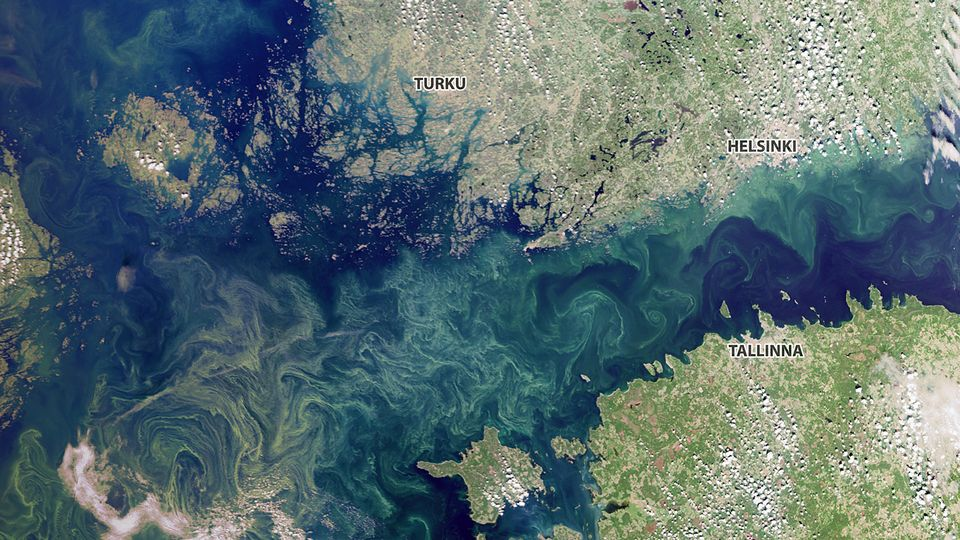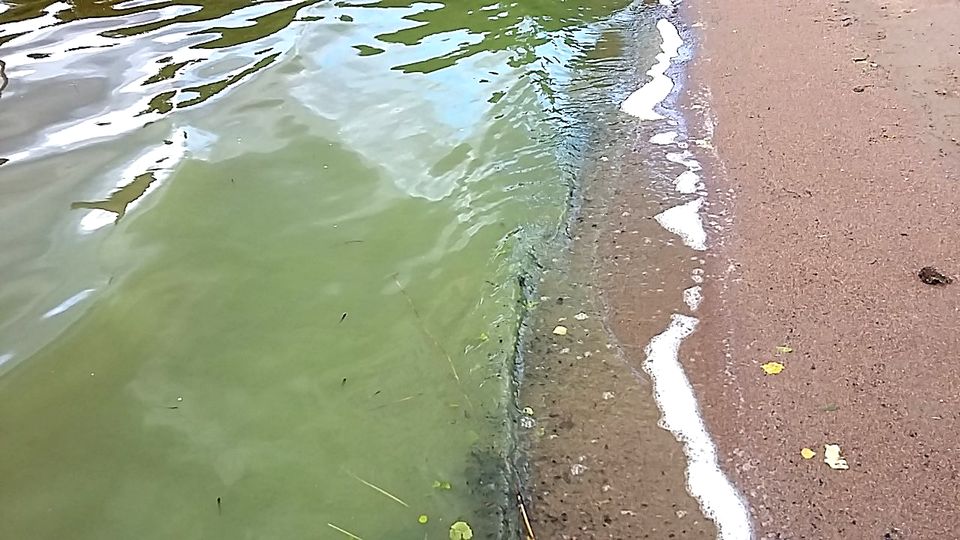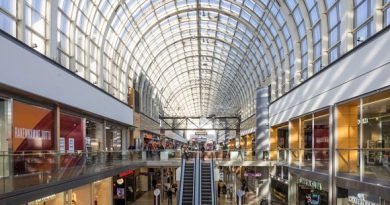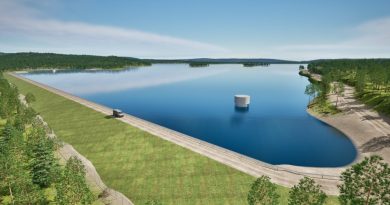Satellite photos show contaminated algae blooming in southern coast of Finland

The heat that hit Finland in late July may draw crowds to beaches, but certain bacteria that live in the water also like it hot.
Satellite photographs taken on Wednesday show an abundance of cyanobacteria – also known by the misnomer “blue-green algae” – mixing with the Baltic waters. So far no large, floating rafts of the bacteria have been sighted.
Researcher Sirpa Lehtinen from the Finnish Environment Institute (Syke) said that cyanobacteria exist in seawater all year round, but intense heat causes them to multiply quickly.
“If there is a lot of bacterial mass in warm water and the wind dies down, the least robust cyanobacteria accumulate on the surface and create blooms and rafts,” Lehtinen said.
The ideal temperature at which blue-green algae begin to form is 16-17 degrees Celsius.
Hot days and weeks exacerbate the immediate growth of the bacteria, but in the long run climate change is a primary factor driving the spread of the blooms.
“There will be less and less oxygen at the bottom of the Baltic Sea as the climate heats up. That means more nutrients are freed up to rise to the surface,” said Lehtinen.
Lakes are also breeding grounds for cyanobacteria in the heat, even though measurements from one week ago found there to be fewer blooms on average in Finnish lakes and waterways compared to previous years.
“Algae” show up as flecks, or pea soup
The amount of cyanobacteria that accumulates around beaches may change very quickly, so visually checking for signs of the bacteria before ingesting or swimming is important.
Small amounts may show up as little green or yellow particles. Large amounts of the bacteria often combine to form a thick, green muck resembling pea soup or paint.

Cyanobacteria blooms are commonly (and mistakenly) referred to as algae, even though bacteria are single-celled and algae are multi-cellular organisms.
Another method to test the contents of lake or seawater is to collect it in a see-through glass and leave it untouched for about one hour.
“Cyanobacteria cells usually accrue on the surface of the water,” Lehtinen from Syke said. “You can use a small stick to differentiate real algae and water plants from bacteria; plants will attach to the stick, whereas cyanobacteria will dissolve into tiny particles in the water.”
The Finnish Environment Institute Syke maintains the national Lake & Sea Wiki page along with ELY-centres, municipalities and members of the community to track the abundance of blue-green algae in sea and lake areas.
The cyanobacteria situation in Finland’s capital region can be monitored via the “Outdoor Recreation” website, a service provided by the City of Helsinki.
Related stories from around the North:
Canada: Thawing permafrost in Canada’s Northwest Territories releasing acid that’s breaking down minerals: study, CBC News
Finland: More toxic blue-green algae in Finland’s lakes, Yle News
Norway: Climate change is driving micro-algae blooms into High Arctic and may affect food chains, says study, Eye on the Arctic
Sweden: Many towns in Sweden seek funds to clean up polluted sites, Radio Sweden
United States: Algae-related toxins found in Arctic sea mammals, Alaska Dispatch News



